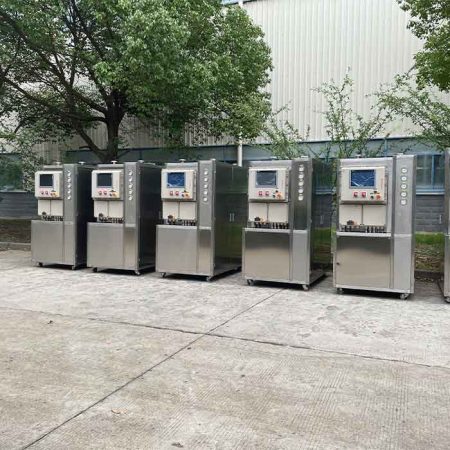Low Temperature Absorption Chiller
Compared to typical chillers, low temperature absorption chillers use waste heat from other processes or equipment to drive a thermodynamic process that enables water to be cooled and distributed to meet HVAC needs. Instead of traditional refrigerants, water is often used in combination with ammonia or lithium bromide, which is the more preferred choice because it is non-toxic.
Key factor:
Since low temperature absorption chillers do not require an electric compressor, they can provide significant cooling capacity while contributing to peak energy consumption. The most critical factor to consider when evaluating the use of these types of coolers is that they do require a substantial and consistent source of waste heat to function properly.
Advantages of using a low temperature absorption chiller
The main refrigerants used in low temperature absorption chillers have no negative impact on global warming or ozone depletion. A low temperature absorption chiller can help businesses save money on electricity, hot water, heating and cooling bills. The absence of a compressor in the machine reduces building noise and vibration, creating a tranquil environment with high reliability.
A low temperature absorption chiller is powered almost entirely by heat that would otherwise be wasted. It does not require energy to generate chilled water or heat. Emergency backup power systems do not require considerable capacity.

Technology to Absorb Chilled Water
Condensers, generators, evaporators, absorbers and heat exchangers are all part of a low temperature absorption chiller. Initially, the absorber contains refrigerant or lithium bromide water. It will be driven through the heat exchanger into the generator tank on top of the chiller. The generator for the chiller will use solar power or waste steam from other systems. Lithium bromide and water are separated by heating. The water evaporates slowly and rises up the condenser, while the lithium bromide sinks.
The catheter carries the lithium bromide back to the absorber. The steam will next pass through the cooling tower. The air pressure in the cooling tower ducts is lower than the pressure in the condenser. When the air pressure drops, water condenses. The cold water was then evaporated and remixed with lithium bromide.
In short, low temperature absorption chillers cool water by rapidly changing the pressure. As the water in the generator heats up, the air pressure rises. Water evaporates as it loses heat. The vapor is then sent to an evaporator for cooling. The vapor cools rapidly and condenses into cold water. The steam absorbs heat and then condenses to form water.
When water evaporates, it absorbs heat. In a low pressure environment, the steam cools and returns to the water. The water in the absorber reacts with the lithium bromide and returns to the heat exchanger, carrying unwanted heat with it.
The low temperature absorption chiller produces cooling water due to low energy input. It will continue to remove heat from the structure throughout the heating and cooling cycle.
Work philosophy
To describe the technique, let’s start with generators. The condenser, absorber and evaporator are all part of this cooler. This process creates a liquid refrigerant solution that can be pushed to higher pressures. This pumping method is used to replace mechanical compression driven by electricity.
Dynamo
Pour into the warmed dilute solution. On heat exchangers carrying hot water or other heat sources. When the solution boils, it produces refrigerant vapor and a hot concentrated solution.
콘덴서
Once in the condenser, the vapor is converted back to liquid through a cooler heat exchanger. The liquid refrigerant can reach the evaporator due to the cooling and decompression expansion valve.
증발기
Low-pressure refrigerant is introduced as a mixture of liquid and vapor. This area is designed to help you relax. Evaporators cool water and are used for cooling commercial buildings.
Absorber
The refrigerant enters the absorber after passing through the evaporator. The absorber absorbs the refrigerant vapor and dilutes it. The heat generated is dissipated by cooling water.
Low temperature absorption chiller utilization
While low temperature absorption chillers are superior to traditional cooling systems in the areas we just mentioned, proper and regular maintenance is critical for optimal performance. Only in this way can the equipment be guaranteed to last for a full 25 years. A chiller will function flawlessly if the maintenance personnel focus on the following areas: controls, mechanical components, and heat transfer components.
Here are some examples of problems that need to be addressed:
• Check the pump shaft seal for wear. Check for refrigerant leaks. The loss rate should not exceed 1%.
• Heat transfer surfaces must be clean and free of sludge and scale.
• Heat exchanger tubes should be free from cracks, pitting and corrosion.
• Pump bearings may need repair or cleaning.
 LNEYA
LNEYA
 简体中文
简体中文

















































































